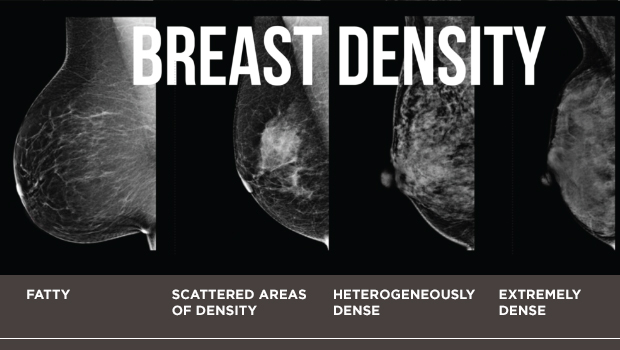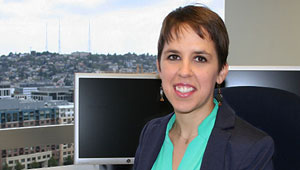Breast density is a risk factor for older women, too

Images from mammograms showing different levels of breast density ranging from least dense (fatty) to extremely dense.
Findings in JAMA Network Open could help guide decision-making about breast cancer screening for women 75 and older
A new study suggests that older women and their doctors should consider breast density, along with other factors, when weighing the benefits and harms of continuing with routine breast cancer screening later in life.
Having dense breasts is an established risk factor for breast cancer among women ages 40 to 65, helping to inform screening decisions. However, few studies have explored breast density as a possible risk factor for older women, whose breasts tend to become less dense as they age.
“The research on breast cancer risk and who may benefit from continued breast cancer screening is particularly sparse for women ages 75 and older,” says Weiwei Zhu, MS, a biostatistician with Kaiser Permanente Washington Health Research Institute (KPWHRI), who is a lead author of the study. “This is reflected in the U.S. Preventive Services Task Force guidelines, which found insufficient evidence to recommend for or against breast cancer screening for this age group.”
In the new study, published in JAMA Network Open, researchers looked at data on 221,714 screening mammograms from 193,787 women ages 65 and older compiled by the Breast Cancer Surveillance Consortium. The study team evaluated whether breast density was associated with the risk of developing invasive breast cancer over 5 years for 2 age groups: women ages 65 to 74, and women ages 75 and older. They used 3 categories to classify breast density, ranging from least to most dense: almost entirely fatty, scattered fibroglandular densities, and extremely or heterogeneously dense breasts.
For both age groups, the risk of breast cancer increased with breast density. For example:
- Women with almost entirely fatty breasts (least dense) in both age groups had about a 30% lower risk of invasive breast cancer than women with scattered fibroglandular breasts.
- In contrast, women with extremely or heterogeneously dense breasts had a higher risk of invasive breast cancer than those with scattered fibroglandular breasts, with a 39% higher risk among women ages 65 to 74 and a 23% higher risk among women ages 75 and older.
The researchers also evaluated whether body mass index (a measure of body fat based on a person’s weight and height) affected the association between breast density and cancer risk. Research shows that breast cancer risk is higher with increasing body mass index after menopause. However, breast density is often lower in individuals who have a higher body mass index. Overall, the study found that body mass index didn’t significantly affect the findings for either age group.
“This study helps fill an important gap in the research,” says Diana Buist, PhD, MPH, a KPWHRI senior investigator and co-author of the study. “Life expectancy is usually the main consideration when deciding whether to continue with breast cancer screening later in life. These finding suggest that, in addition to life expectancy, individuals may want to consider risk factors such as breast density when considering the potential benefits and harms of continuing screening.”
By Sophie Ramsey
Cancer screening

Catching breast cancers when mammograms are limited
New study calculates risk-based approach to detect the most cancers with the fewest exams.
news

Benefit of 3D mammogram less with very dense breasts
But for most women, digital breast tomosynthesis improves cancer detection and reduces recalls.



